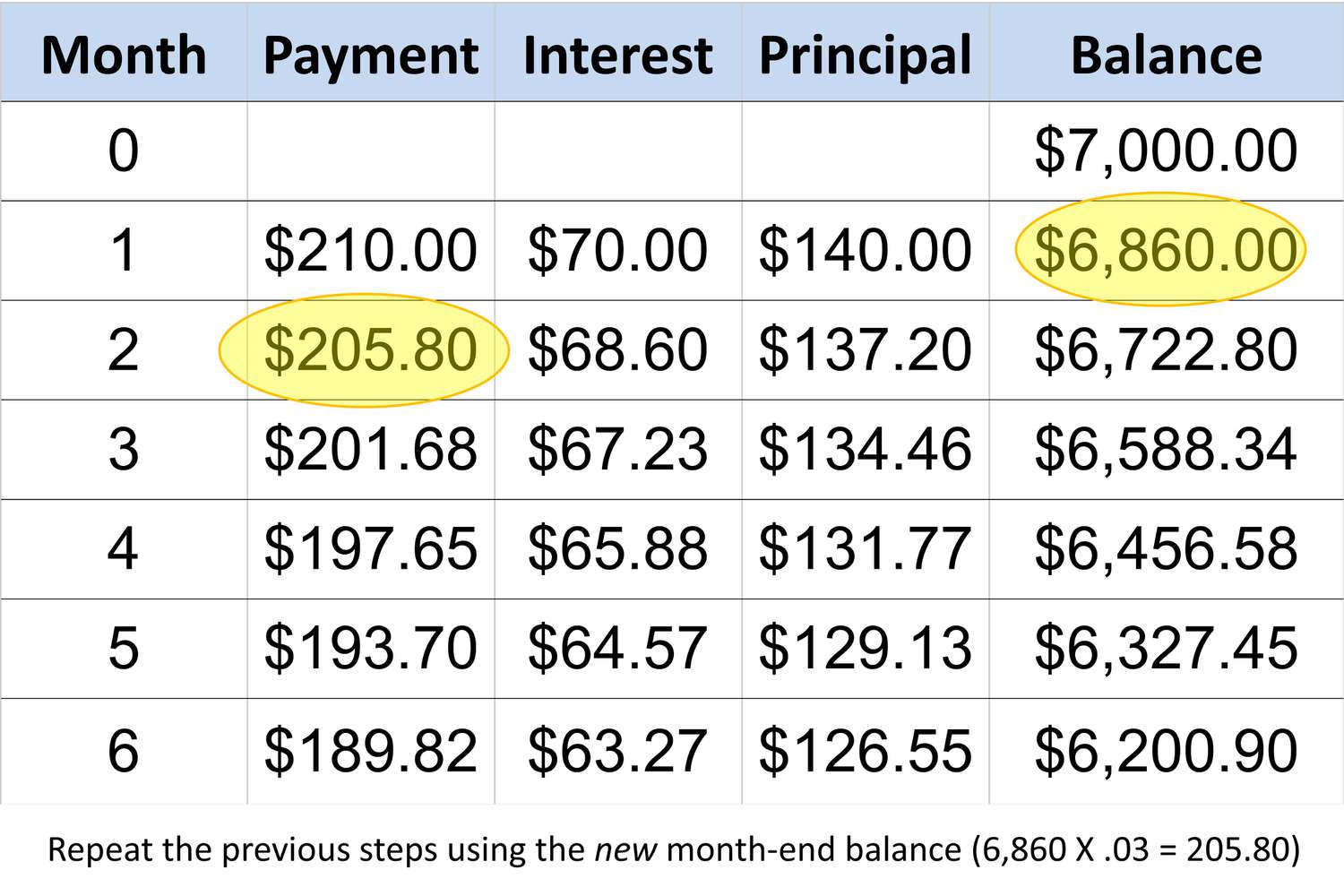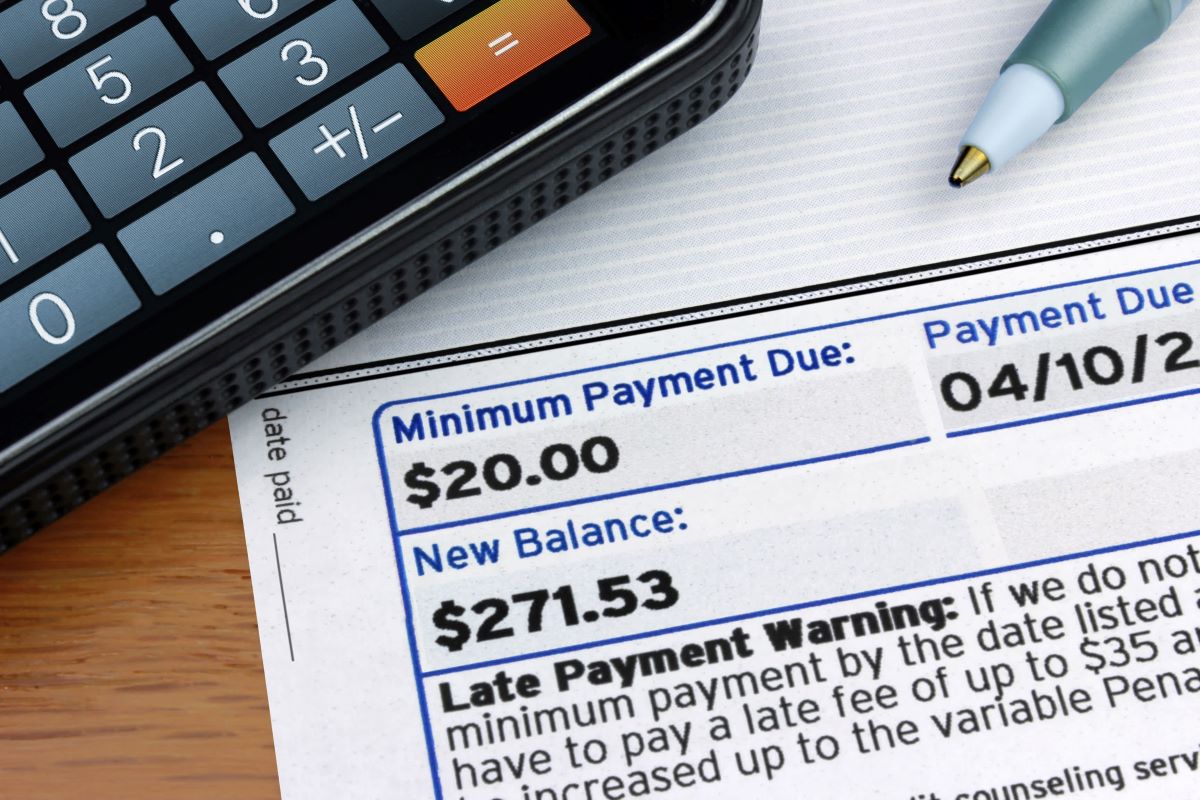Home>Finance>What Is The Minimum Payment On USAA Credit Cards


Finance
What Is The Minimum Payment On USAA Credit Cards
Published: February 25, 2024
Learn about the minimum payment requirements for USAA credit cards and manage your finances wisely. Understand the importance of meeting minimum payments to avoid penalties and interest charges.
(Many of the links in this article redirect to a specific reviewed product. Your purchase of these products through affiliate links helps to generate commission for LiveWell, at no extra cost. Learn more)
Table of Contents
Introduction
Navigating the world of credit cards can be both empowering and daunting. As a USAA credit cardholder, understanding the nuances of your financial obligations is crucial. One of the fundamental aspects of managing a credit card is comprehending the concept of minimum payments. In this article, we will delve into the specifics of minimum payments on USAA credit cards, shedding light on their significance and the factors that influence them.
Understanding the dynamics of minimum payments is essential for maintaining healthy financial habits and avoiding potential pitfalls. By grasping the intricacies of this aspect of credit card management, you can make informed decisions that align with your financial goals. Whether you are a seasoned credit card user or a newcomer to the realm of personal finance, this exploration of USAA credit card minimum payments aims to equip you with valuable insights and actionable knowledge.
As we embark on this journey, we will unravel the significance of minimum payments, explore the factors that can impact them, and highlight the importance of exceeding the minimum payment threshold. Additionally, we will provide a practical guide on calculating the minimum payment, empowering you to take control of your financial well-being. By the end of this article, you will have a comprehensive understanding of the minimum payment dynamics associated with USAA credit cards, empowering you to navigate your financial journey with confidence and clarity.
Understanding Minimum Payments
Minimum payments represent the lowest amount that cardholders must pay toward their credit card balance each month to remain in good standing with the issuer. While the allure of meeting only the minimum requirement may seem appealing, it is essential to comprehend the broader implications of this approach. By paying only the minimum, cardholders incur interest on the remaining balance, potentially leading to long-term debt and increased financial strain.
It is vital to recognize that minimum payments primarily serve as a mechanism for ensuring that cardholders fulfill their basic financial obligations. However, they are not designed to expedite the repayment of the outstanding balance. By understanding this distinction, cardholders can make informed decisions regarding their payment strategy, thereby mitigating the risk of accumulating excessive interest and prolonged debt.
Furthermore, comprehending the structure of minimum payments allows cardholders to assess their financial capabilities and set realistic repayment goals. This awareness empowers individuals to proactively manage their credit card balances and make strategic decisions aligned with their long-term financial well-being. By gaining insight into the purpose and implications of minimum payments, cardholders can navigate their financial responsibilities with prudence and foresight, fostering a healthy and sustainable approach to credit card management.
Factors Affecting Minimum Payments
Several key factors influence the calculation of minimum payments on USAA credit cards, each playing a distinct role in determining the required monthly amount. Understanding these factors is paramount for cardholders seeking to gain clarity on their financial obligations and make informed decisions regarding their repayment strategy.
One primary factor that significantly impacts minimum payments is the outstanding balance on the credit card. As the balance fluctuates, so does the minimum payment, reflecting the dynamic nature of credit card obligations. Additionally, the Annual Percentage Rate (APR) assigned to the credit card balance plays a pivotal role in shaping the minimum payment amount. Higher APRs result in larger minimum payments, underscoring the influence of interest rates on the repayment structure.
Moreover, the terms and conditions outlined in the cardholder agreement, including any applicable fees or penalties, can affect the minimum payment calculation. By familiarizing themselves with these terms, cardholders can gain insight into the specific elements that contribute to their minimum payment requirements, enabling them to anticipate and manage their financial responsibilities effectively.
Another crucial factor that can impact minimum payments is the utilization rate, which represents the proportion of the credit limit currently in use. High utilization rates may lead to increased minimum payments, highlighting the interplay between credit utilization and repayment obligations. By monitoring and managing their credit utilization, cardholders can exert a degree of control over their minimum payment amounts, thereby influencing their overall financial strategy.
By comprehending the multifaceted factors that influence minimum payments on USAA credit cards, cardholders can navigate their financial obligations with clarity and foresight. This understanding empowers individuals to make informed decisions regarding their repayment approach, fostering a proactive and strategic stance toward credit card management.
Importance of Making More Than the Minimum Payment
While meeting the minimum payment requirement is essential for maintaining good standing with the credit card issuer, it is equally crucial to recognize the significance of making payments that exceed the minimum threshold. By surpassing the minimum payment, cardholders can accelerate the reduction of their outstanding balance, mitigate the impact of accruing interest, and cultivate a proactive approach to debt management.
One of the primary advantages of making more than the minimum payment lies in the expedited reduction of the outstanding balance. By allocating additional funds toward the repayment of the principal amount, cardholders can effectively diminish their overall debt burden, thereby advancing their journey toward financial freedom and stability.
Furthermore, exceeding the minimum payment enables cardholders to minimize the long-term impact of interest accrual. By reducing the outstanding balance more rapidly, individuals can mitigate the cumulative interest charges, ultimately saving money and expediting the path to debt-free status.
Beyond the financial benefits, making payments that surpass the minimum requirement fosters a proactive and disciplined approach to financial management. It reflects a commitment to responsible debt repayment and signifies a dedication to achieving long-term financial well-being. By consistently exceeding the minimum payment, cardholders can instill positive financial habits and cultivate a mindset centered on prudent and strategic debt management.
Moreover, making payments that exceed the minimum requirement can enhance the cardholder’s credit profile and contribute to an improved credit score. By demonstrating a proactive approach to debt repayment and showcasing responsible financial behavior, individuals can bolster their creditworthiness, laying a solid foundation for future financial endeavors.
In essence, surpassing the minimum payment threshold embodies a proactive and holistic approach to credit card management. By embracing this practice, cardholders can expedite debt repayment, minimize interest costs, cultivate responsible financial habits, and fortify their credit standing, ultimately fostering a pathway to long-term financial stability and success.
How to Calculate the Minimum Payment
Calculating the minimum payment on a USAA credit card involves a straightforward yet essential process. While the specific calculation method may vary based on the card’s terms and conditions, understanding the general principles underlying minimum payment determination is pivotal for cardholders seeking clarity on their financial obligations.
Typically, the minimum payment comprises a percentage of the outstanding balance, often subject to a minimum dollar amount. This percentage can vary depending on the card issuer’s policies and may encompass factors such as the card’s APR, fees, and other relevant considerations. By familiarizing themselves with the cardholder agreement and associated documentation, individuals can discern the precise formula used to calculate the minimum payment for their USAA credit card.
One common approach to minimum payment calculation involves a formula that combines a fixed percentage of the outstanding balance with any applicable fees and interest charges. For instance, a typical calculation might encompass a minimum payment equivalent to 1% to 3% of the outstanding balance, coupled with any interest accrued during the billing cycle and any relevant fees stipulated in the cardholder agreement.
Cardholders can refer to their monthly statements or the issuer’s official documentation to ascertain the specific method employed to calculate the minimum payment for their USAA credit card. By gaining clarity on this process, individuals can proactively plan their financial commitments and make informed decisions regarding their repayment strategy.
It is important to note that while the minimum payment calculation method may adhere to a standard framework, variations can exist based on the specific terms and conditions associated with individual credit cards. As such, cardholders are encouraged to consult the issuer’s resources or reach out to customer service for personalized guidance on understanding and calculating their minimum payment obligations.
By acquiring a comprehensive understanding of the minimum payment calculation process, cardholders can navigate their financial responsibilities with clarity and confidence, enabling them to proactively manage their credit card balances and make informed decisions aligned with their long-term financial well-being.
Conclusion
In conclusion, comprehending the dynamics of minimum payments on USAA credit cards is essential for maintaining sound financial health and making informed decisions regarding debt management. By understanding the purpose and implications of minimum payments, cardholders can navigate their financial responsibilities with prudence and foresight, fostering a proactive and strategic approach to credit card management.
Furthermore, recognizing the multifaceted factors that influence minimum payments empowers individuals to proactively manage their credit card balances and make strategic decisions aligned with their long-term financial well-being. By gaining insight into the specific elements that contribute to their minimum payment requirements, cardholders can anticipate and manage their financial responsibilities effectively, fostering a healthy and sustainable approach to credit card management.
Exceeding the minimum payment threshold embodies a proactive and holistic approach to credit card management. By embracing this practice, cardholders can expedite debt repayment, minimize interest costs, cultivate responsible financial habits, and fortify their credit standing, ultimately fostering a pathway to long-term financial stability and success.
Ultimately, by acquiring a comprehensive understanding of the minimum payment calculation process, cardholders can navigate their financial responsibilities with clarity and confidence, enabling them to proactively manage their credit card balances and make informed decisions aligned with their long-term financial well-being. This knowledge equips individuals with the tools and insights necessary to navigate their financial journey with confidence and clarity, fostering a proactive and empowered stance toward credit card management.
In essence, the exploration of minimum payments on USAA credit cards serves as a foundational step toward cultivating responsible financial habits, mitigating the impact of interest accrual, and fostering a proactive and disciplined approach to debt management. By embracing this knowledge, cardholders can embark on a journey toward financial empowerment and long-term stability, equipped with the insights and understanding necessary to navigate the complexities of credit card management with confidence and prudence.














